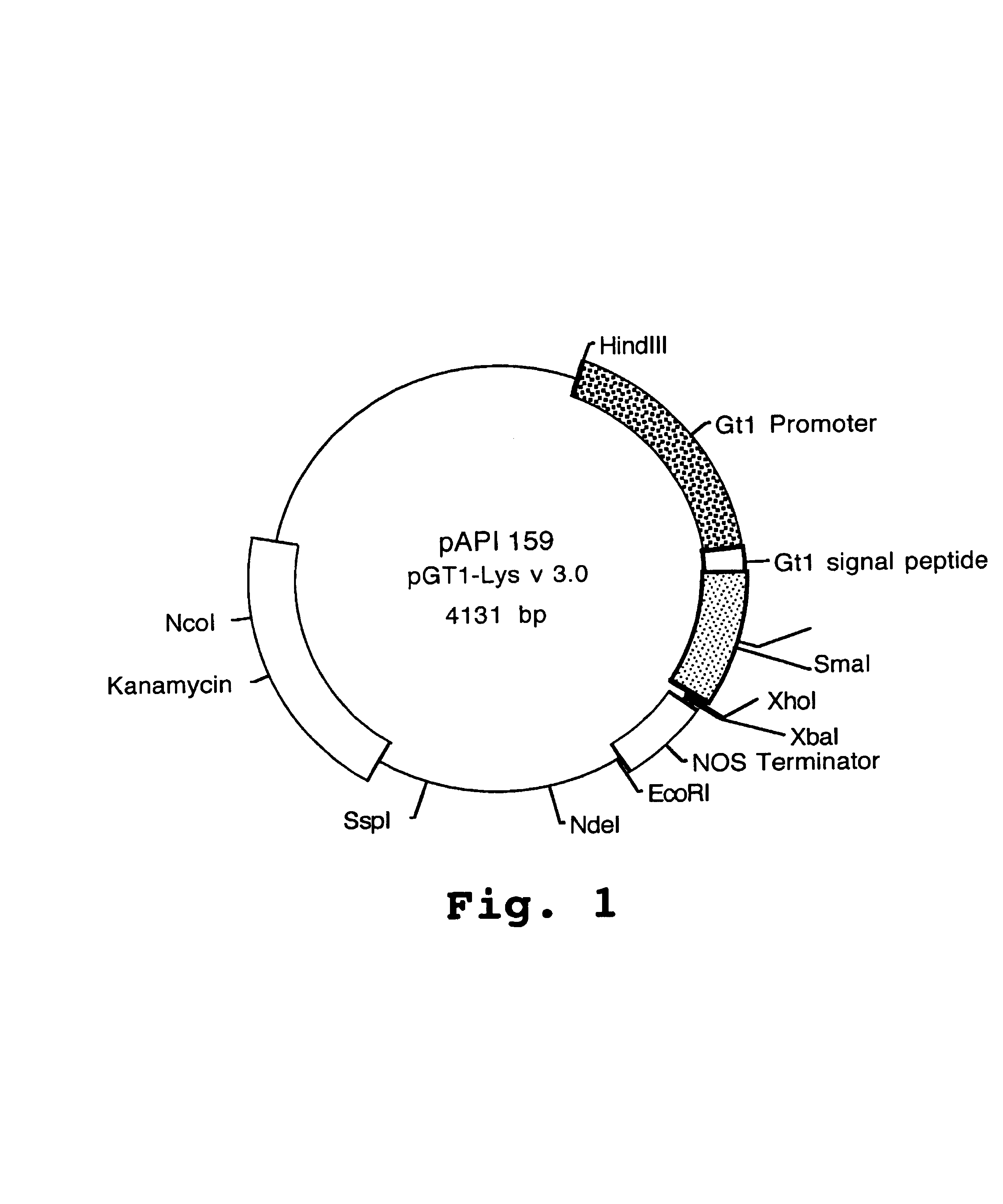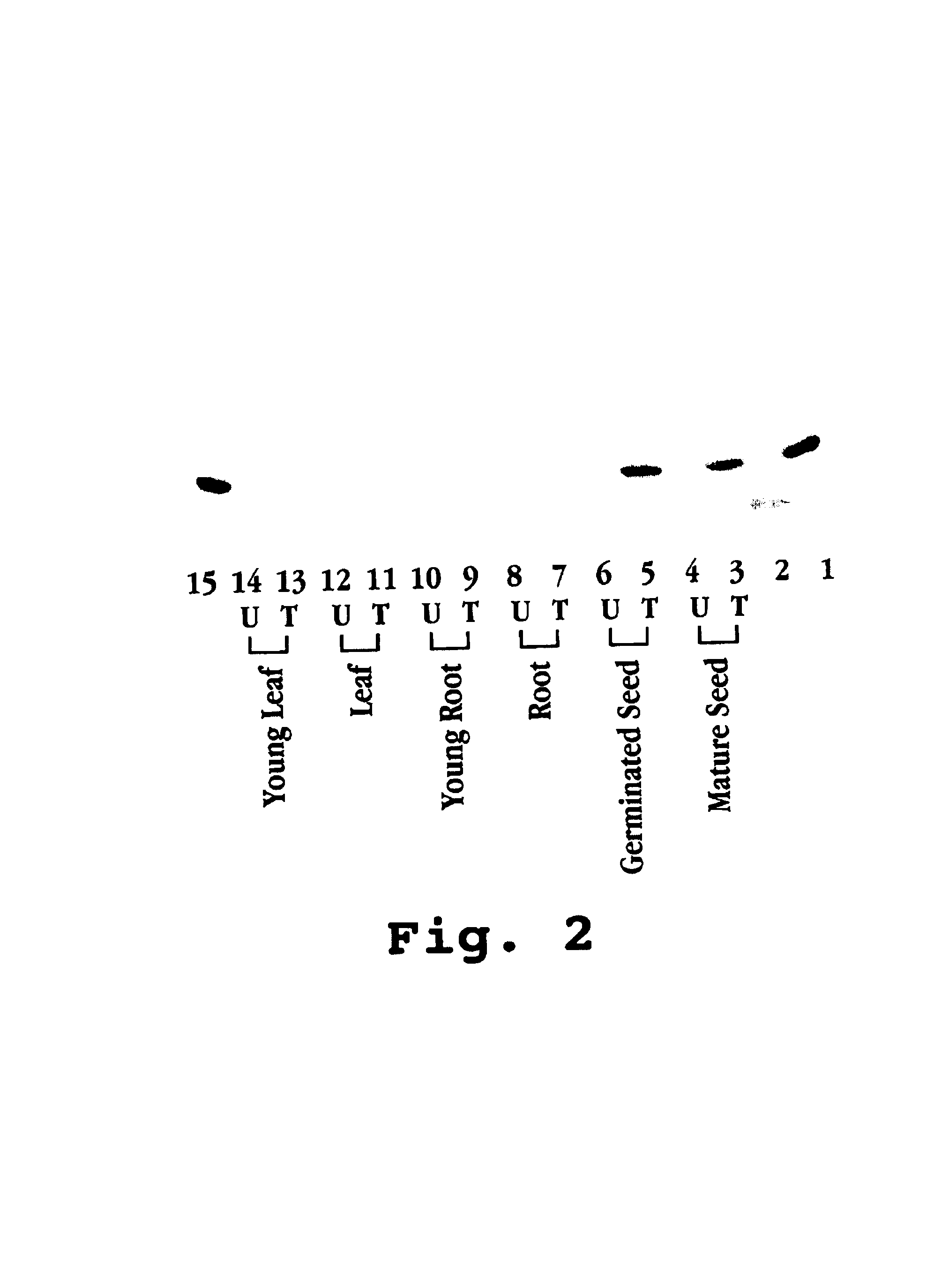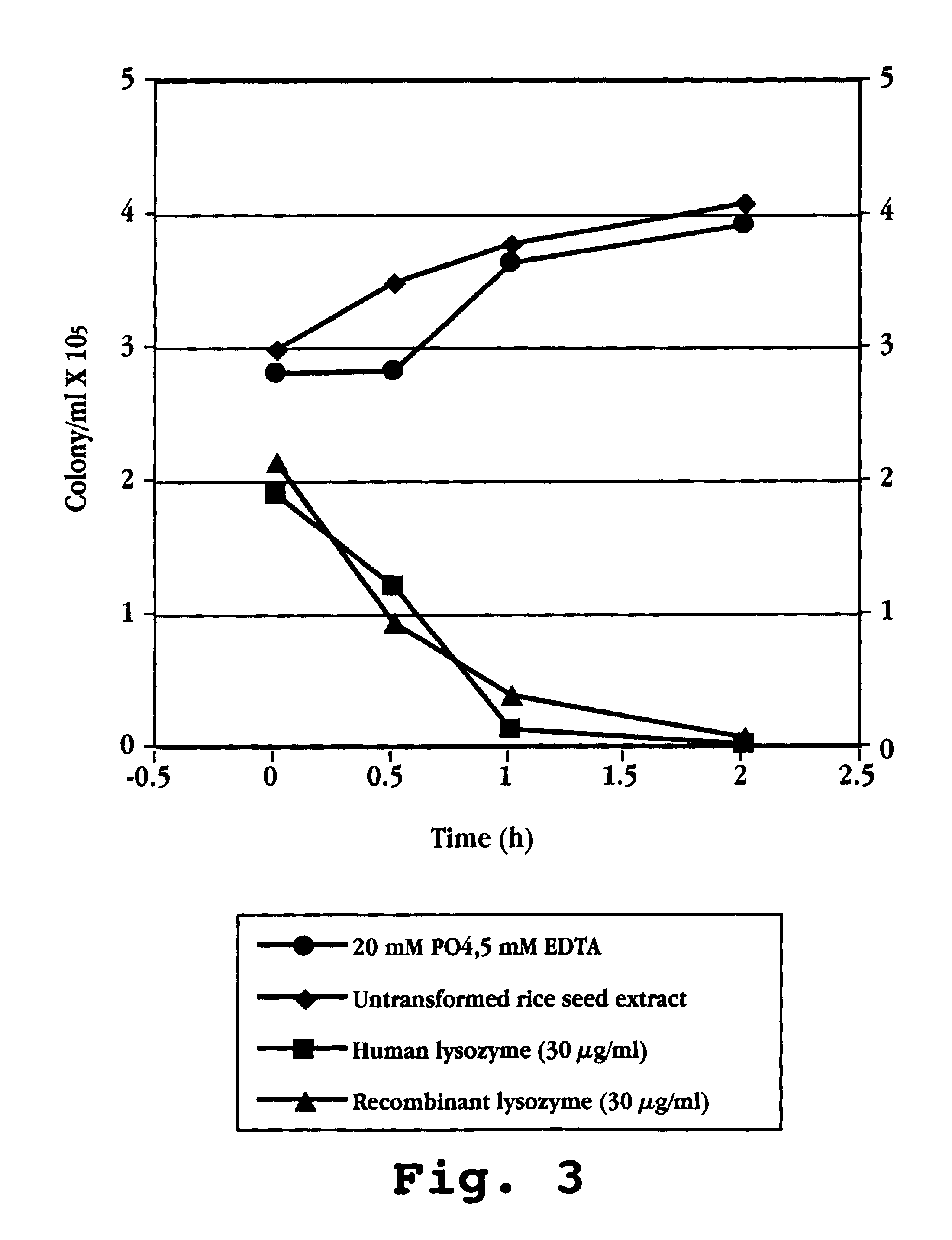Expression of human milk proteins in transgenic plants
a technology of transgenic plants and human milk, which is applied in the field of human milk proteins, can solve the problems of high cost of recombinant protein production, (ii) food safety issues, and infants cannot be fed mother's milk,
- Summary
- Abstract
- Description
- Claims
- Application Information
AI Technical Summary
Benefits of technology
Problems solved by technology
Method used
Image
Examples
example 1
Expression Vectors for Generation of Transgenic Plants
[0398]In general, expression vectors were constructed using standard molecular biological techniques as described in Ausubel et al., 1987. The vectors contain a heterologous protein coding sequence for lactoferrin or lysozyme under the control of a rice tissue-specific promoter, as further described below.
[0399]A. An Expression Vector for Human Lysozyme Expression in Transgenic Rice Cells
[0400]The synthesized lysozyme gene was cloned into an API base vector pAPI137 by conventional molecular cloning techniques (Sambrook et al., 1989). Plasmid pAPI137 contains the RAmy3D promoter (Huang et al., 1993), the codons for the RAmy3D signal peptide and the RAmy3D terminator. The RAmy3D promoter, isolated from the rice amylase gene family, is activated in rice calli by sugar starvation (Huang et al., 1993). The human lysozyme gene was placed between the sequences of the RAmy3D signal peptide and the RAmy3D terminator to give plasmid pAPI15...
example 2
Generation of Transgenic Plant Cells Expressing Human Milk Proteins
[0406]The procedure of microprojectile-mediated rice transformation (U.S. Pat. No. 6,284,956) was followed. Calli was raised from TP309 mature rice seeds, with calli two to four mm in diameter selected and placed on N6 media supplemented with 0.3 M mannitol and 0.3 M sorbitol for 20 hours before bombardment. Biolistic bombardment was carried out with the biolistic PDC-1000 / He system (Bio-Rad, USA). Plasmid carrying milk protein genes and pAPI76, a plasmid carrying hygromycin selectable marker gene were gold-coated and co-bombarded at a ratio of 6:1 with a helium pressure of 1100 psi. Two day old bombarded calli were then transferred to N6 selection media supplemented with 20 mg / I hygromycin B and allowed to grow in the dark at 26° C. for 45 days.
[0407]In order to develop transgenic rice plants, the selected calli were transferred to pre-regeneration and regeneration media. When regenerated plants became 1-3 cm in hei...
example 3
Characterization of Recombinant Human Lysozyme (rLys) Produced by Transgenic Rice Cells and Plants
[0428]A. Southern Blot Analysis
[0429]About three grams of young leaves were collected and grounded with liquid nitrogen into a fine powder. The genomic DNA was isolated according to the procedure as described in Dellaporta et al., 1983, and purified by phenol-chloroform extraction. Approximately 5 μg of DNA was then with HindIII and EcoRI, separated on a 1% agarose gel, blotted onto a Hybond+ membrane (Amersham Pharmacia Biotech, Piscataway, N.J.). The blot was probed with gel purified human Hlys gene and developed by ECL™ direct nucleic acid labeling and detection system (Amersham Pharmacia). By comparing to known amounts of the intact 1470 bp human lysozyme (Hlys) gene, the intact copy number of the transgenes, including promoter and Hlys gene, was estimated to vary from about 1 to about 6. No positive correlation between copy number of the rHlys transgene and amount of rHlys synthesi...
PUM
| Property | Measurement | Unit |
|---|---|---|
| Fraction | aaaaa | aaaaa |
| Mass | aaaaa | aaaaa |
| Density | aaaaa | aaaaa |
Abstract
Description
Claims
Application Information
 Login to View More
Login to View More - R&D
- Intellectual Property
- Life Sciences
- Materials
- Tech Scout
- Unparalleled Data Quality
- Higher Quality Content
- 60% Fewer Hallucinations
Browse by: Latest US Patents, China's latest patents, Technical Efficacy Thesaurus, Application Domain, Technology Topic, Popular Technical Reports.
© 2025 PatSnap. All rights reserved.Legal|Privacy policy|Modern Slavery Act Transparency Statement|Sitemap|About US| Contact US: help@patsnap.com



